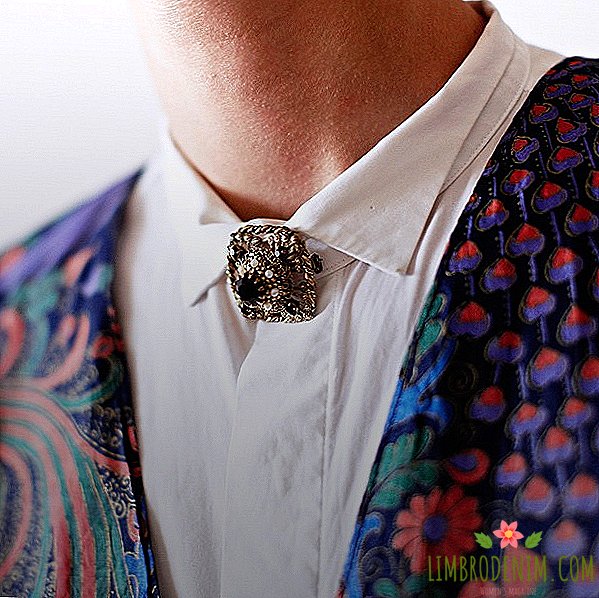Torch "Freedom": How women learned to smoke
"Girls smoke cigarettes as a sign of freedom" - The newspaper The New York Times with the title (and promise) read American women on the morning of April 1, 1929. And still many women see the motive of independence in smoking. However, under the slogans "Believe in yourself" and "Baby, you have come a long way", representatives of the American tobacco industry of the 1930s-1960s did not advocate for equal sex rights, but for sex rights for smoking.
Text: Victoria Malis

1929 Raised over Liberty Island, the torch has “illuminated the world” for forty-three years, and tobacco manufacturers are looking for a strategy that would allow them to enter a new market. Cigarette gets a promising pseudonym "torch of freedom" (torch of freedom) and instantly takes place between the middle and index fingers of the female hand, which thirsts for this very freedom. The individual author's metaphor itself belongs to Sigmund Freud's disciple Abraham Brill, but the idea to use this phrase as a PR strategy and thereby ride the feminist movement comes to mind the “father of PR” (and his nephew of the same Freud) Edward Bernys. Now the "woman who smokes" looks bold and bold, and the cigarette in her mouth becomes a kind of declaration of freedom and independence.
Tobacco companies persistently introduced the symbolism of their cigarette brands into everyday life, focusing women's attention on the fact that the industry not only declares its support for the feminist movement, but also invests in all the few platforms of women's self-realization with a dollar. Philip Morris (brand Virginia Slims) sponsored tennis tournaments, obliging female athletes to warm up in a sweatshirt with a matching logo, and even engage in a world tennis star and part-time ambassador, Billie Jean King, to participate in the “battle of the sexes” against Bobby Riggs. (The Hollywood film adaptation of Emma Stone was released last year. The contribution of the cigarette maker was decided not to do the accent.) British American Tobacco arranged green party balls in the color of the packaging design of its brand Lucky Strike (Green Fashion Fall), the same Philip Morris company held two-week beauty runnings, in which between a wardrobe review and a change in hair, a woman looked at watching short films "Baby, you have come a long way." The leitmotif is smoking as a step towards the equality of the sexes following the receipt of suffrage.
PR did a successful campaign on the opposition of cigarettes and sweets - they positioned smoking as an effective way to lose weight
Still, equal rights to smoke - is this a step forward or five steps back? To begin with, the declaration of women's freedom conflicted with the accompanying rhetoric of tobacco producers. PR brand Lucky Strike, for example, made a successful campaign on the opposition of cigarettes and candy - they positioned smoking as an effective way to lose weight, not indulging in pleasure: "To keep a slim figure, before which no one can resist, pull over Lucky instead of candy" ("To keep a lucky figure of a sweetheart instead of a sweetheart"). That is, on the one hand, advertising demanded a compulsory harmony and restrictions on food from a woman, and on the other, she hinted that women are vigilantly watched by people around leanness.
Along the way, the design team of the tobacco brand Benson & Hedges assured that the trail of lipstick on a cigarette butt should invariably embarrass the owner of make-up lips. “Men don’t like it” - the arrow to the white Debs Rose Tips cigarette was signed with a bright color print on the tip. The "mess" in the ashtray subconsciously annoys men, even if they do not complain directly. But since the men who like “smoking women like themselves”, you just need to be “smart to the end” - to be able to disguise the traces. Many cigarette manufacturers have built their PR campaigns around this artificially created complex. Hides the lipstick imprint cigarettes released and the brand Fems, and even Marlboro. Women with peace of mind took a deep drag.


Suffice it to recall the slogans by which tobacco manufacturers wanted to reach the male half of the audience. A vivid example is “Give her your Tipalet (brand of cigarettes) and see how she smokes it.” In Marlboro (another Philip Morris brand), which positions its product as a cigarette for real men, they came to the conclusion that strippers would be the most effective ambassadors, and in the Hollywood filmmakers view, a smoking woman should be portrayed as "this passionate object of desire." Holly Golightly with a long mouthpiece in the mouth performed by Audrey Hepburn asks the men for money "at the hairdresser", and the smoking heroine Marlene Dietrich in the Blue Angel dances in a cabaret. In the XXI century, the real message is not disguised even in an advertisement aimed at a female audience - remember the 2008 Kiss billboards, where a girl with candy in her mouth admits that she loves “everything new, tasty and round”.
We expectedly failed to find women in the head structures of tobacco companies of that time. And yet, why do women so willingly believe (and continue to believe) the ideological support of the tobacco industry? Looking at the billboard advertisements for the Van Heusen tie brand, which called for women to be shown that “this is a man’s world,” or Mr. Leggs, whose PR people triumphantly hoisted a man's foot on a woman's head, advertising trousers, the woman, it seems, simply had no chance not to smoke. Even manufacturers of goods oriented towards women have not been in a hurry to declare their support for women's emancipation in the 1960s. Home appliance advertising promoted no less sexist values than Van Heusen or Mr. Leggs.
Women who are embarrassed by the red trace of lipstick on a bullhead and the "wrong" manner of smoking, still readily saw in the cigarette a step towards emancipation
The reason for such a contrasting and, at first glance, revolutionary PR strategy of the cigarette industry lies in whose budget the manufacturer infringed on, and not at all in ideological unanimity with the fighters for equal rights of the sexes. Both a man and a vacuum cleaner bought a tie, but the need to spend money on cigarettes had to be convinced by the women themselves. They, embarrassed by the red trace of lipstick on the bullhead and the "wrong" manner of smoking, still readily saw in the cigarette a step towards emancipation. The very “torch of freedom”, albeit with a dim flame.
Today, the percentage of women smokers in economically disadvantaged countries fluctuates around the 9% mark, whereas in richer countries, where feminism occupies a much more confident position, the percentage of the female population regularly raising the “torch of freedom” on average reaches 26 "We make Virginia Slims cigarettes especially for women, because they are superior to men in biological parameters," says advertising. Biological superiority gives women the right to a special cigarette - a thinner one (apparently, they will not raise a thicker one), "a more perfect design for a more perfect being." Receive and sign on the check for a new pack.
PHOTO: Wikipedia (1, 2, 3)





